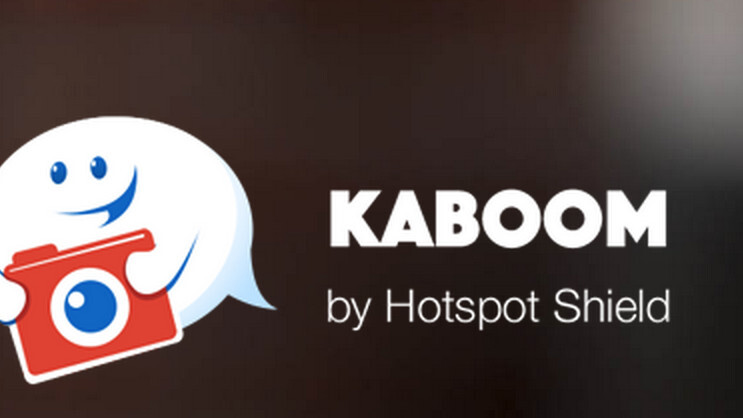
If you’re concerned about the content you put online, you might consider using an app that destroys content after a certain amount of time. But destructive apps rely on a careful ecosystem in order to really be, well, destructive. You can’t really take them and plop them somewhere else, like Facebook or Twitter.
That’s the need that Kaboom, a new app by Anchor Free, tries to fill. The app, which launches today, allows users to share messages to social networks as well as over text and chat apps like LINE and What’s App.
“We launched Kaboom because today we want users to secure information securely and privately,” said David Gorodyansky, CEO of Anchor Free. “To not only protect security, privacy and freedom, but also to help when people want to share pictures and messages.”

Anchor Free is most well-known for its secure, private VPN software Hotspot Shield (available on Windows as well as iOS and Android), which has been downloaded more than 300 million times. Gorodyansky said that Hotspot Shield mainly serves countries who have limited access to the Internet or rampant censorship, as Hotspot Shield allows users to connect to the internet securely and privately.
Kaboom, Gorodyansky said, is designed to be an extension of Hotspot Shield.
Users simply sign in with Kaboom through their mobile phones. Then you can write a message or take a photo and send it via text or share on Twitter, Facebook and other apps. The message shows up as links to Kaboom proper, and anyone (with or without a Kaboom account) can see them.
Users can select how long the message will remain live, or set it to destruct after a certain number of views.
“We’re not trying to create the next Facebook or WhatsApp, we’re trying to provide more controls to help users how they share,” he said.
Gorodyansky said that in order to stay truly destructive, Kaboom servers delete the content right when those limits are met.
“When a user sets the amount of time or use until the picture disappears, that’s the rule for the servers to delete the picture,” he explained. “If it’s no longer available to be seen on Facebook, it’s no longer to be seen on servers.”
The sign-in requires a mobile phone number, but Gorodyansky says that Anchor Free does not have access to that data.
Kaboom is self-destructive, but do not confuse that for truly end-to-end private or anonymous. There are plenty of ways to control who sees the Kaboom when — the share controls mean that you can give it to as many or as little friends as you want, depending on which app you use.
Limiting the number of views can also help keep messages away from prying eyes. But it’s easy to screenshot a Kaboom message and share it to others. And the app clearly displays the user’s first and last name when you click the link.

These circumstances can be mitigated to some extent by smart user awareness, but it’s important to note that you should exercise good judgment on what you share.
Kaboom is designed to become yet another tool for users who either live in countries that practically require not leaving a recordable trail on the internet or are so privacy-minded that they cannot bear the thought of a company like Twitter maintaining a searchable record of everything they’ve ever said. And to that effect, Kaboom will give its users peace of mind.
➤ Kaboom
Read Next: Dashlane brings its one-touch password changer to iPhone and Apple Watch
Get the TNW newsletter
Get the most important tech news in your inbox each week.




